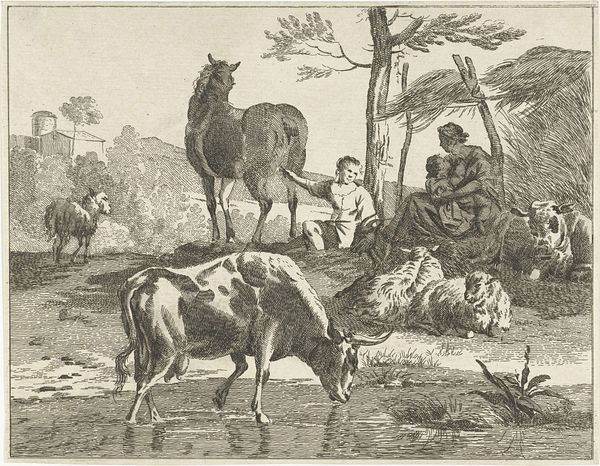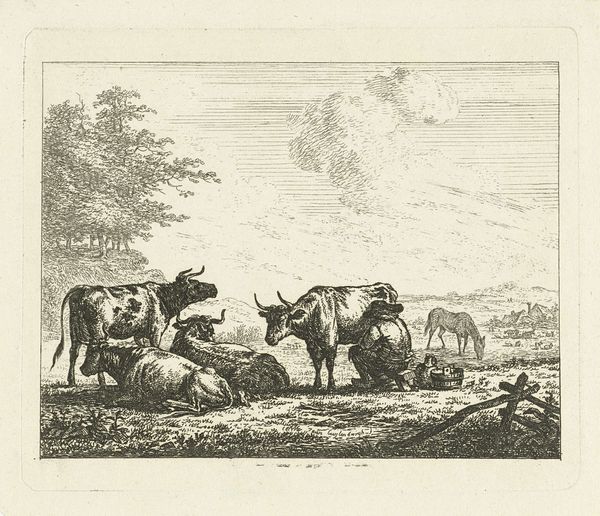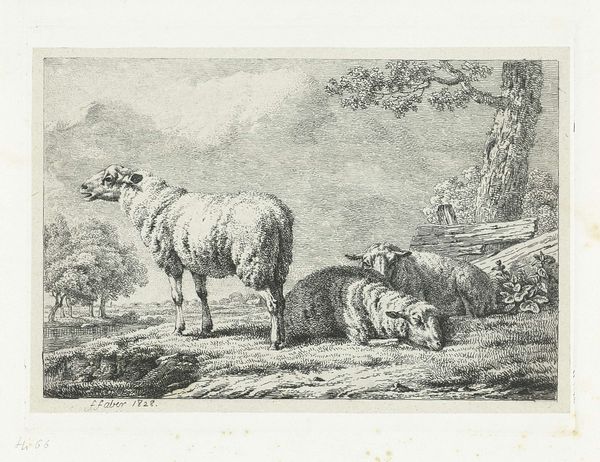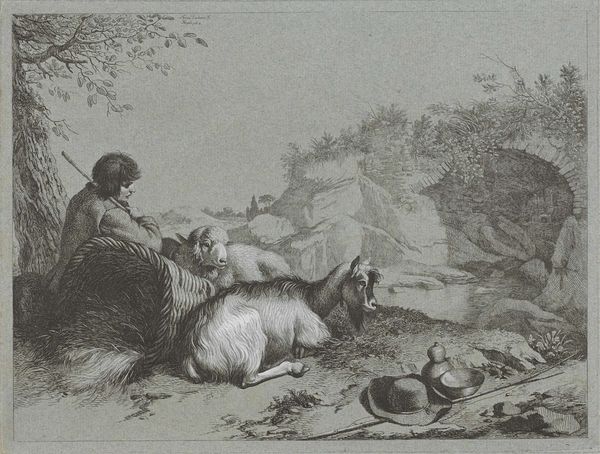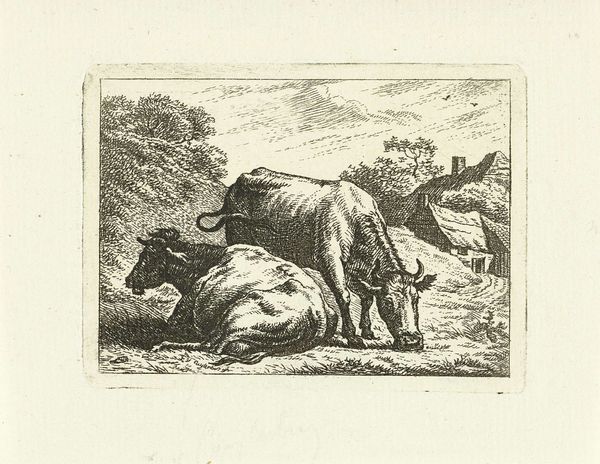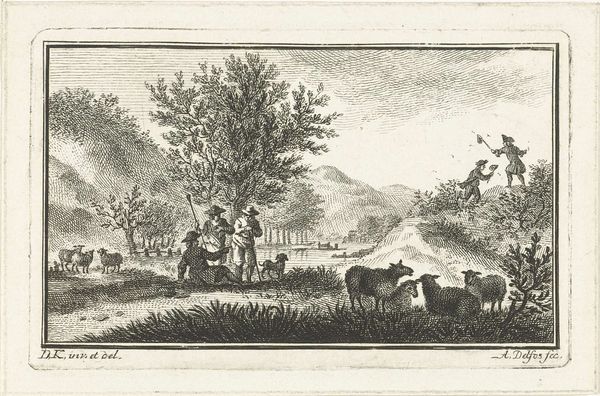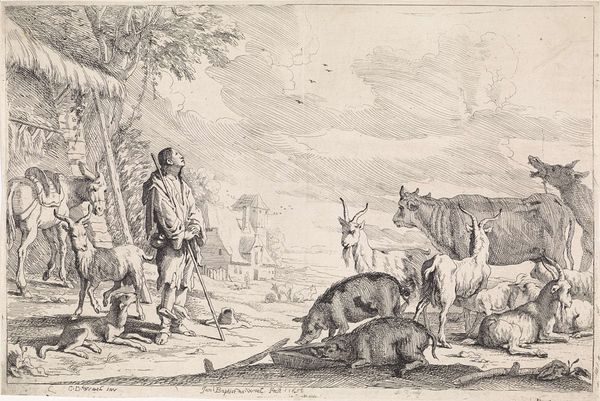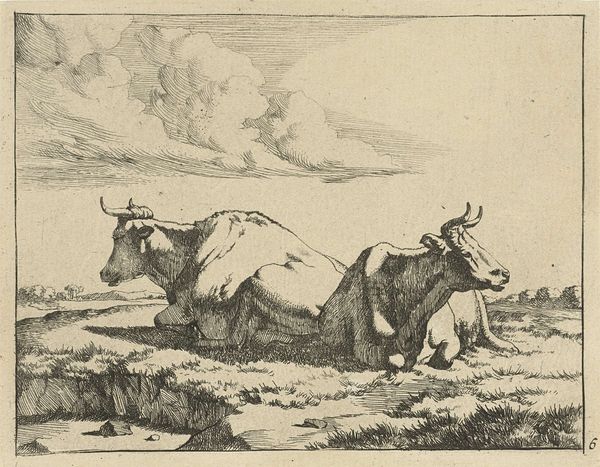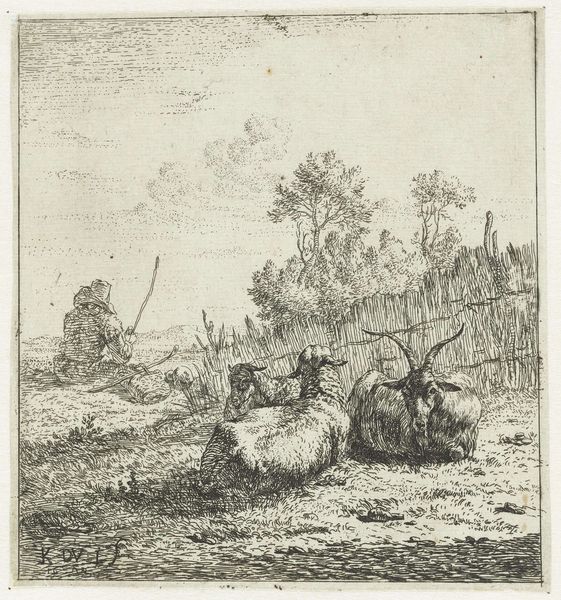
drawing, print, etching
#
drawing
# print
#
etching
#
landscape
#
genre-painting
Dimensions: height 84 mm, width 114 mm
Copyright: Rijks Museum: Open Domain
Editor: Here we have Frédéric Thódore Faber's etching, "Mededeelzame melkmeid," made in 1808. There's such a pastoral and serene atmosphere about it. What symbolic meanings might we find hidden within such a seemingly simple scene? Curator: Consider how milk itself functions as a primal symbol of nourishment, the maternal bond. Observe how it’s being directly shared here – not through a vessel, but offered almost ritualistically. Editor: That’s a good point. There’s something really intimate about how the mother is sharing the milk with her child directly. Curator: The directness speaks volumes, doesn't it? Faber evokes associations with classical allegories of charity and maternal care. Even the landscape seems to echo this abundance, acting almost as a guarantor of a safe world. Does that resonate with you? Editor: Definitely! There's something reassuring about the lushness of the scene. It’s more than just a genre painting, I think, because the setting feels like a supportive stage for the connection between mother and child. The placement of the sheep on the left of the landscape - is there more there? Curator: They symbolize innocence and pastoral harmony, alluding to older iconographies and the idyllic existence many yearned for during the social upheavals of the 19th century. And where is our point of view? Do you see the separation of worlds and inclusion? Editor: It's incredible how many layers of meaning you've drawn out from such a seemingly simple image! I hadn’t fully grasped the interplay between these symbols. Curator: Every detail, no matter how subtle, serves to deepen our understanding of Faber’s message and connects the present moment with archetypal themes that still hold emotional power today.
Comments
No comments
Be the first to comment and join the conversation on the ultimate creative platform.
